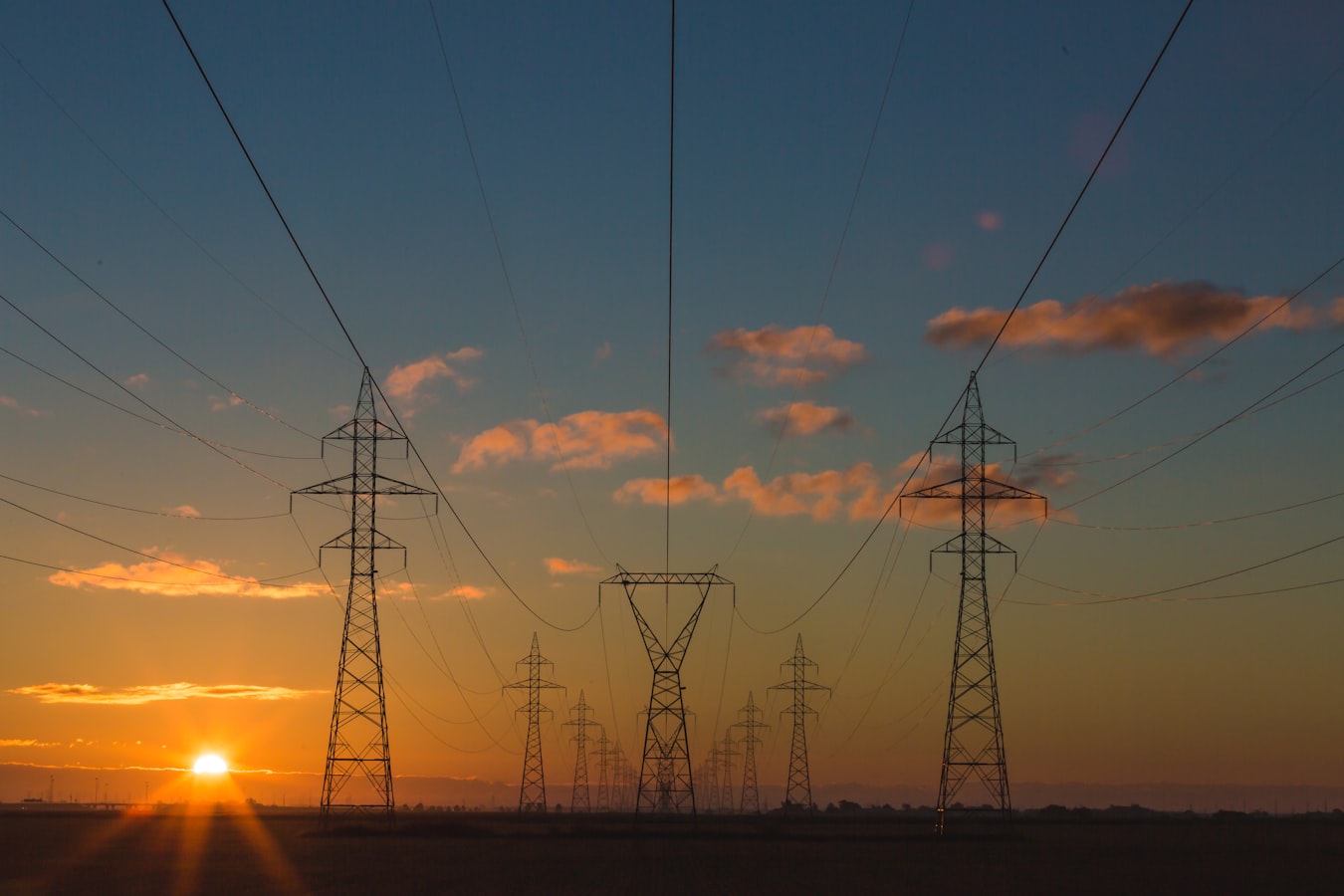POWER UP YOUR PROFITS & PURPOSE WITH PEER-TO-PEER ENERGY TRADING
Join the energy revolution with Jousto. Buy and sell electricity directly with other businesses and prosumers, slash your energy costs, and champion sustainability – even if you don't have solar panels.
THE NEW ENERGY FRONTIER: P2P TRADING EXPLAINED
WHAT IS PEER-TO-PEER ENERGY TRADING?
Peer-to-Peer (P2P) energy trading is revolutionising how businesses interact with electricity. Often described as the "Uber or Airbnb of energy," it creates a direct marketplace where businesses and individuals can buy and sell electricity between each other, bypassing traditional retailers as the sole intermediary.
With P2P trading, businesses with solar panels (prosumers) can sell their excess energy at better rates than standard feed-in tariffs. Meanwhile, businesses without solar can purchase locally-generated renewable energy, often at prices lower than standard retail rates.
This democratised approach puts you in control – you decide who you buy from, who you sell to, and at what price. It's a fundamental shift from being a passive energy consumer to becoming an active participant in a dynamic, local energy marketplace.
And the best part? You don't need to have solar panels to participate and benefit.

HOW P2P ENERGY TRADING WORKS WITH JOUSTO
Through our strategic partnership with Localvolts, Jousto makes P2P energy trading simple, accessible, and highly beneficial for your business.

P2P energy trading creates a direct marketplace between energy producers and consumers.
JOIN THE MARKETPLACE
Jousto helps your business register with Localvolts, an authorised electricity retailer with a transparent P2P marketplace. We handle the paperwork and technical setup, making onboarding seamless.
SET YOUR PREFERENCES
With Jousto's guidance, establish your buying or selling preferences. Choose specific trading partners, set price points, or opt for automatic optimisation to always get the best rates.
TRADE ENERGY
Buy energy directly from local solar producers or sell your excess generation. Every 5-minute interval, the platform matches buyers and sellers based on preferences, with the wholesale market as a backup.
OPTIMISE WITH AUTOMATION
Jousto's energy automation systems can dynamically adjust your consumption, storage, or generation in response to real-time market signals, maximising your financial benefits without manual intervention.
BENEFITS FOR EVERY BUSINESS
Whether you have solar panels or not, P2P energy trading offers significant advantages for your business.
REDUCE ENERGY COSTS
Access potentially lower energy rates by buying directly from local generators or the wholesale market. If you have solar, sell your excess at better prices than standard feed-in tariffs, creating a new revenue stream.
ENHANCE SUSTAINABILITY
Source renewable energy directly from local producers, reducing your carbon footprint and enhancing your ESG credentials. Demonstrate your commitment to sustainability with verifiable, traceable green energy procurement.
GAIN CONTROL & TRANSPARENCY
Take control of your energy procurement with complete visibility of pricing, sources, and usage patterns. Set your own prices for buying or selling, and access detailed analytics on your energy performance.
STRENGTHEN COMMUNITY TIES
Support local businesses and community members by trading energy within your network. Create meaningful connections and keep energy expenditure circulating in your local economy.
INCREASE ENERGY RESILIENCE
Reduce dependence on traditional energy retailers and volatile markets. Diversify your energy sources and gain greater stability in your energy supply and costs.
ACCESS MARKET INTELLIGENCE
Gain insights into energy market trends and patterns through detailed analytics. Make informed decisions about energy usage, procurement, and investment based on real data.
P2P TRADING BENEFITS: WITH OR WITHOUT SOLAR
P2P energy trading offers distinct yet complementary advantages for all businesses, regardless of whether you generate your own power.
| P2P Feature | Benefits If You HAVE Solar | Benefits If You DON'T Have Solar |
|---|---|---|
| Direct Energy Sales | Sell surplus energy at potentially higher rates than standard Feed-in Tariffs; create a new revenue stream. | Opportunity to become a preferred buyer for local generators, fostering stable supply relationships. |
| Local Energy Purchasing | Supplement your own generation during shortfalls by sourcing from other local P2P sellers at better rates than grid import. | Access locally generated renewable energy directly from community members or other businesses, often at costs lower than traditional retail tariffs. |
| Price Control | Set your own selling price for surplus energy, optimising returns based on market conditions. | Negotiate or select buy prices from P2P sellers; gain more control over energy expenditure and hedge against retail price volatility. |
| ESG Enhancement | Demonstrate leadership in clean energy generation and proactive participation in the shared energy economy. | Verifiably source local renewable energy, reduce your carbon footprint, and showcase commitment to local community and sustainable practices. |
| Community Connection | Become a local energy provider, supporting neighbours and other local businesses with your clean energy. | Directly support local renewable energy generators, strengthening local economic ties and community resilience. |
THE JOUSTO & LOCALVOLTS PARTNERSHIP
A POWERFUL ALLIANCE FOR YOUR ENERGY SUCCESS
Jousto has partnered with Localvolts, an Australian-owned, authorised electricity retailer that operates a transparent peer-to-peer electricity marketplace. This strategic collaboration combines Localvolts' innovative trading platform with Jousto's expertise in energy management and automation.
Localvolts provides the marketplace where you can buy and sell electricity, set your own prices, and choose your trading partners. Their platform offers complete transparency, with all charges and earnings passed through without markup.
Jousto enhances this experience by:
- Conducting comprehensive energy audits to identify P2P opportunities
- Providing strategic advice on optimal trading approaches
- Configuring your buy and sell preferences to align with your business objectives
- Implementing energy automation solutions that dynamically respond to market signals
- Offering ongoing support and optimisation to maximise your benefits
Together, we deliver a seamless, end-to-end P2P energy trading solution that makes sophisticated energy management accessible and beneficial for your business.

P2P ENERGY TRADING IN ACTION
Discover how different businesses and communities are leveraging P2P energy trading to achieve their goals.

MULTI-TENANT BUILDINGS
Building owners with rooftop solar can sell energy directly to their tenants. This provides tenants with access to cheaper, green energy and allows the building owner to recoup their solar investment more effectively.
Learn More
BUSINESS-TO-BUSINESS TRADING
Businesses with large solar installations can sell excess energy to neighbouring businesses with limited roof space or higher energy demands, creating localised industrial energy ecosystems.
Learn More
COMMUNITY ENERGY PROJECTS
Community energy initiatives can use P2P trading to allow members to directly trade their share of generated energy or for the project to sell surplus to the wider local community or businesses.
Learn MoreFREQUENTLY ASKED QUESTIONS
No, you don't need solar panels to participate! While businesses with solar can sell their excess energy, any business can join as a buyer. Through platforms like Localvolts, you can purchase energy directly from local solar producers, often at rates more competitive than standard retail tariffs. This gives all businesses access to potentially cheaper, greener energy without the upfront investment in solar infrastructure.
P2P energy trading utilises the existing electricity grid infrastructure for the physical delivery of energy. When you buy energy from another participant, the electricity still flows through the traditional grid network. What changes is the commercial arrangement – instead of purchasing exclusively from a retailer, you're buying directly from other generators.
Localvolts, as an authorised electricity retailer, manages all the necessary interactions with the grid operators and market systems, ensuring compliance with regulations while enabling the peer-to-peer transactions. Network charges (the cost of using the grid) are transparently passed through to participants.
Localvolts operates on a transparent fee structure based on your business's annual imported energy consumption. For business customers in South Australia, the daily fees (inclusive of GST) are:
- Category 1 (Up to 40 MWh/year): $1.32 per day
- Category 2 (>40 MWh to 100 MWh/year): $2.42 per day
- Category 3 (>100 MWh to 160 MWh/year): $3.52 per day
- Category 4 (>160 MWh/year): $3.52 per day, plus 1% of the value of the imported energy
These are platform access fees; the actual cost of energy consumed will depend on the prices achieved in P2P trades or the wholesale spot market. All other charges (like network fees) are passed through without markup. Jousto can help you understand these costs in the context of your specific business and calculate the potential net savings.
Jousto enhances your P2P trading experience in several key ways:
- Energy Audits & Strategy: We analyse your current energy usage patterns and develop a tailored P2P strategy that aligns with your business objectives.
- Platform Setup & Configuration: We handle the technical aspects of joining Localvolts and configure your buying or selling preferences for optimal results.
- Intelligent Automation: Our energy automation systems can dynamically adjust your consumption, storage, or generation in response to real-time market signals, maximising financial benefits without requiring constant manual oversight.
- Ongoing Optimisation: We continuously monitor your P2P performance and refine your strategy as market conditions or your business needs evolve.
- Education & Support: We demystify the P2P process, providing clear explanations and responsive support throughout your journey.
Essentially, Jousto transforms what could be a complex technical undertaking into a straightforward, managed service that delivers tangible benefits for your business.
Yes, Localvolts operates as an authorised electricity retailer serving residential and business customers across multiple states, including South Australia, New South Wales, Queensland, the Australian Capital Territory, and Tasmania.
Jousto's P2P energy trading services are available to businesses throughout these regions, with particular expertise in the South Australian market. The specific regulatory frameworks and network tariffs may vary slightly between states, but the core benefits of P2P trading are accessible across these territories.
If you're interested in P2P trading for your business, contact Jousto for a consultation specific to your location and circumstances.
READY TO REVOLUTIONISE YOUR BUSINESS ENERGY?
Take the first step towards a smarter, more efficient, and more rewarding energy future. Contact Jousto today for a personalised consultation.
CONTACT JOUSTO
Our team is ready to answer your questions and help you explore how P2P energy trading can benefit your business.
Phone:
0489 261 333
Email:
Visit Us (By Appointment):
185 Morphett St, Adelaide
Service Area:
Our SME division services South Australia.
Ready to get started?
Book your free consultation with our P2P energy experts today.
Book Your Free Consultation
Why Do Electricity Prices Go Negative? Everything You Need to Know
Negative electricity prices might sound like a strange concept—after all, we are used to paying for electricity, not being paid to use it. However, in certain situations, electricity prices can drop below zero, meaning that power generators are effectively paying consumers to take electricity off the grid.
While this may seem like a financial win for consumers, the reality is more complex. Negative electricity prices are a sign of market imbalances, and they have significant implications for energy producers, businesses, and households.
In this article, we will explain why electricity prices go negative, what happens when they do, and how consumers can take advantage of these rare events.

Why Do Electricity Prices Go Negative?
Electricity prices are determined by supply and demand. Normally, when demand increases, prices rise, and when demand falls, prices drop. However, in some cases, supply can far exceed demand, leading to negative pricing. This happens for a few key reasons:
1. Oversupply of Renewable Energy
Renewable energy sources like solar and wind generate electricity whenever conditions allow, regardless of demand. If the grid receives an excess of renewable energy—especially during periods of low demand—prices can drop below zero.
For example:
Solar energy oversupply – On sunny days, solar panels can generate more electricity than is needed, particularly around midday when demand is lower.
Strong wind conditions – Wind turbines continue generating power as long as the wind blows, sometimes producing excess electricity overnight when demand is low.
Since renewable energy has very low operating costs and does not shut down easily, generators may keep supplying electricity even when demand drops, leading to negative pricing.
2. Inflexible Power Generation
Some traditional power plants, such as nuclear and coal-fired stations, cannot quickly adjust their output. Unlike gas plants, which can ramp production up and down easily, these facilities may find it more expensive to shut down and restart than to continue running even when demand is low.
As a result, they may sell electricity at negative prices just to keep operating, rather than shutting down temporarily and incurring higher restart costs later.
3. Low Demand Periods
Electricity demand fluctuates throughout the day and across seasons. Negative pricing is more likely to occur:
At night, when households and businesses use less electricity but some generators continue operating.
On mild weather days, when there is little need for heating or cooling.
During holidays and weekends, when industrial and commercial demand is lower than usual.
4. Grid Congestion and Transmission Limits
Even if there is excess electricity in one region, it cannot always be transported to areas where demand is higher. Grid constraints and transmission bottlenecks can prevent surplus electricity from reaching consumers, causing localised negative pricing.
5. Government Incentives and Market Rules
Some renewable energy generators receive subsidies or incentives for producing electricity, even if there is no demand for it. This means they may continue supplying power even at negative prices because they still receive financial benefits from government schemes or contracts.
What Happens When Electricity Prices Go Negative?
When electricity prices go negative, different groups experience different effects. Here’s what happens for various stakeholders:
1. Consumers and Businesses Can Benefit
If you are on a wholesale electricity plan or a dynamic pricing contract, you might actually get paid to use electricity when prices go negative. This can be a great opportunity to:
Charge battery storage systems for later use.
Run high-energy appliances, such as washing machines or electric heaters.
Charge electric vehicles (EVs) at no cost—or even get paid to do so.
However, most residential consumers are on fixed-rate electricity plans, meaning they won’t directly benefit from negative prices unless their provider offers time-of-use pricing.
2. Energy Storage Becomes Highly Valuable
Battery storage systems, such as those integrated with Jousto, can take full advantage of negative prices by charging when electricity is free or even profitable to store. Later, when prices rise, stored energy can be used instead of drawing from the grid.
For businesses and homeowners with battery storage, this means:
Lower electricity costs overall.
Reduced reliance on the grid during peak pricing periods.
The potential to sell stored energy back to the grid at a profit.
3. Renewable Energy Generators Face Challenges
Negative pricing can be problematic for renewable energy producers, especially those without energy storage. In many cases, they may be forced to:
Continue generating electricity at a loss.
Shut down temporarily if possible (which is easier for solar than for wind).
Look for alternative ways to use excess power, such as selling to battery operators or hydrogen producers.
4. Traditional Power Plants May Struggle
For coal, nuclear, and some gas power plants, negative pricing is a sign of inefficiency. Since these plants cannot quickly reduce output, they may be forced to operate at a loss or pay others to take their electricity. Over time, repeated negative pricing events can make these power stations less viable and accelerate the shift towards more flexible energy solutions.
5. Electricity Markets Adjust Their Strategies
Energy traders and market operators monitor negative pricing closely. When prices go negative, electricity retailers and large industrial consumers may increase their usage to take advantage of the situation. At the same time, energy storage operators can charge their batteries and prepare to sell electricity back to the grid when prices rise again.
How to Take Advantage of Negative Electricity Prices
If you are a consumer or business looking to make the most of negative electricity prices, here are some practical steps:
1. Use a Smart Energy Management System
Jousto’s intelligent energy management system can automatically optimise when you consume electricity based on price fluctuations. This ensures you are using or storing electricity at the most cost-effective times.
2. Invest in Battery Storage
Battery storage allows you to take full advantage of negative prices by charging when electricity is free and discharging when prices rise. Visit Jousto to learn how battery storage can save you money.
3. Consider a Wholesale Electricity Plan
Some energy retailers offer wholesale electricity pricing, which gives consumers direct access to market price fluctuations. This can be beneficial if you have flexible energy usage habits.
4. Shift Energy Usage to Low-Price Periods
If you know when negative pricing is likely to occur, plan high-energy activities such as:
Charging electric vehicles.
Running air conditioning or heating systems.
Operating heavy machinery (for businesses).
5. Monitor Electricity Market Trends
Understanding market trends can help businesses and households plan for negative price events. Many energy providers and government websites offer real-time electricity price tracking.
The Future of Negative Electricity Prices
As renewable energy capacity grows and battery storage technology improves, negative electricity prices may become more common. Future developments to watch include:
Better grid management – Smarter energy distribution and demand-response programs will help reduce price volatility.
Wider adoption of battery storage – More homes and businesses investing in energy storage will help stabilise supply and demand.
Dynamic pricing models for consumers – More energy providers may offer flexible pricing plans that allow consumers to benefit from negative prices.
Final Thoughts
Negative electricity prices are a fascinating aspect of modern energy markets, reflecting the growing influence of renewable energy and the challenges of balancing supply and demand. While they present difficulties for power generators, they offer exciting opportunities for consumers, businesses, and battery storage users.
With the right strategies—such as using energy storage, adopting smart energy management systems like Jousto, and shifting energy usage—consumers can turn negative electricity prices into a financial advantage. As the energy landscape evolves, those who embrace flexibility and innovation will be best positioned to benefit.
COMPANY
PRODUCTS
SERVICES
INFORMATION
OTHER USE CASES

© Copyright 2025.Honen Lead Generation.
All Rights Reserved.
Phone: 0489 261 333
185 Morphett St, Adelaide, SA, 5000